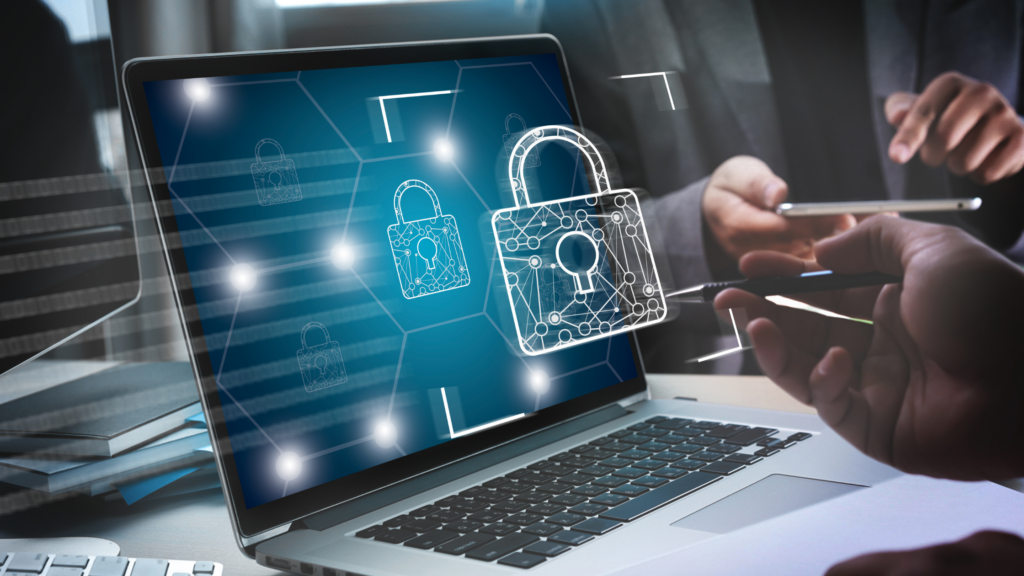
In today’s digital age, cybersecurity has become a vital concern for individuals, businesses, and organizations alike. According to the Cybersecurity and Infrastructure Security Agency (CISA), “Cybersecurity is the art of protecting networks, devices, and data from unauthorized access or criminal use, ensuring confidentiality, integrity, and availability of information.” With the rapid increase in digitization, our reliance on online platforms has grown exponentially, making cybersecurity more crucial than ever.
The importance of cybersecurity cannot be overstated, as it safeguards various categories of data, including sensitive information, personally identifiable information (PII), protected health information (PHI), personal data, intellectual property, and governmental and industry information systems. Without a robust cybersecurity program in place, individuals and organizations become vulnerable to data breaches, making them attractive targets for cybercriminals.
As our online presence continues to expand, leaving digital footprints in our wake, it is essential to prioritize cybersecurity. This article aims to provide guidance on safeguarding your online presence, ensuring a safe and secure online experience. By implementing effective cybersecurity measures, you can confidently browse the internet, enjoy social media, and engage in various online activities, knowing your digital identity is protected.
Understanding Online Threats
A threat is a potential occurrence that could compromise the confidentiality, integrity, or availability of information or systems. Threats can be intentional (e.g., hacking, malware) or unintentional (e.g., human error, natural disasters). An online threat is a potential or actual occurrence that could compromise the security, integrity, or availability of digital information, systems, or networks. Online threats can originate from various sources, including individuals, groups, organizations, or nations, and can be intentional or unintentional.
Examples of Online Threats
- Malware
Malware (malicious software) is software that has been specifically designed to perform malicious tasks on a device or network, such as corrupting data or taking control of a system. Malware can be in form of:
- Viruses: Replicate and spread to other systems
- Worms: Self-replicating malware that spreads without user interaction
- Trojans: Disguised as legitimate software, allowing unauthorized access
- Ransomware: Encrypts data, demanding payment for decryption
- Spyware: Monitors user activity
- Adware: Displays unwanted advertisements
Effects: Data theft, system damage, financial loss.
- Phishing Attacks
Phishing attacks are when a cybercriminal attempts to lure individuals into providing sensitive data such as personally identifiable information (PII), banking and credit card details and passwords through messages, emails, phone calls and sometimes through conversations.
- Online Harassment or Cyberstalking
Online harassment involves threatening or bullying individuals online by harassment threats, identity theft and stalking
Effects: Emotional distress, financial loss, reputational damage.
Common Attack Vectors
A vector refers to a path or method used to deliver a malicious payload or exploit a vulnerability. Some common attack vectors include;
- Email:
The following methods are used
- Phishing: Fake emails tricking users into revealing sensitive information.
- Spear phishing: Targeted attacks on specific individuals or organizations.
- Email attachments: Malware-laced attachments or malicious links.
- Business email compromise (BEC): Impersonating executives or employees.
- Social Media:
The following methods are used:
- Social engineering: Manipulating users into revealing sensitive information.
- Malicious links or attachments.
- Fake profiles or impersonation.
- Data harvesting: Collecting sensitive information from public profiles.
- Public Wi-Fi:
The following methods are used:
- Man-in-the-middle (MitM) attacks: Intercepting communication between devices.
- Eavesdropping: Intercepting sensitive information.
- Malware distribution: Spreading malware through public Wi-Fi networks.
- Unsecured connections: Accessing sensitive information through unencrypted connections.
Other Common Attack Vectors:
- Infected software downloads.
- Vulnerable web applications.
- Outdated or unpatched systems.
- Insider threats (malicious employees or contractors).
- Physical attacks (USB drives, stolen devices).
Password Security
A Password is a word, phrase, or string of characters intended to differentiate an authorized user or process (for the purpose of permitting access) from an unauthorized user, or put another way, a password is used to prove one’s identity, or authorize access to a resource. To be able to protect these passwords; the following password practices should be followed
Password best practices:
- Password Length: Minimum 12 characters
- Complexity: Mix uppercase, lowercase, numbers, and special characters like (#@^&! Etc)
- Uniqueness: Use unique passwords for each account
- Frequently change passwords
- Change password immediately once it is shared to others.
- Use trusted password managers to manage your passwords to avoiding forgetting.
Password manager recommendations:
- Nordpass
- Roboform
- Dashlane
Safe Browsing Habits
Browsing is an ongoing activity for all users to search information on the internet. Here are some of the safe browsing habits:
- Avoid suspicious links and downloads: be cautious and check the link if it is trusted. Avoid clicking on any pop up advertisement when visiting sites.
- Use secure search engines (e.g., Google, Bing)
- Use secure browsers (e.g., Chrome, Firefox)
- Keep browser updated
- use Virtual Private Network (VPN)
Social Media Safety
A majority of people are using social media and have accounts on atleast two platforms like facebook, twitter, tiktok, Instagram, telegram etc. As social media has become an important aspect even in business; the following best practices should be used on social media:
- Privacy settings: Limit personal data sharing
- Data protection: Monitor account activity
- Identifying online scams and fake profiles:
- Verify profiles before interacting
- Be cautious of suspicious messages
- Customize privacy settings
- Enable Multi factor authentication
- Avoid using the same password for all social media platforms
Protecting Personal Data
Personal data is subjective to each individual. What each individual decides to store and keep safe is up to the individual. However data like identification documents, financial data,authentication credentials and health information are some of the common sensitive personal data. Here is how data can be protected:
- Data backup: Regularly backup important data
- Encryption: Use encryption for sensitive data
- Secure online storage options:
- Dropbox
- Google Drive
- Microsoft OneDrive
- Multi factor authentication (MFA): Enable MFA for all accounts
Network Security
A network will connect everything discussed in this article. From using social media to accessing information. The network also requires caution when using it and here are some of the best practices:
- Home network protection:
- Secure router configuration
- Enable firewall
- Public Wi-Fi safety precautions:
- Use VPNs
- Avoid sensitive activities
Staying Up-to-Date
Staying up to date will avoid a lot of cyber threats because these are practices that are analyzing current threats and analyzing on how to avoid them or mitigate them. The following practices are recommended when staying up to date:
- Regular software updates
- Security patches and vulnerability fixes
- Cybersecurity news and resources:
- Stay informed about emerging threats
- Follow reputable cybersecurity sources
Conclusion
Maintaining online security requires vigilance and proactive measures. Cybersecurity is a journey everyone should take and it is everyone responsibility to protect themselves online by using strong, unique passwords and a password manager, practicing safe browsing habits, protecting personal data with encryption and backup, enabling multi-factor authenticationand staying informed about cybersecurity threats.
In today’s digital landscape, cybersecurity is a shared responsibility. By taking these steps, you’ll contribute to a safer online community.
Stay safe online!
